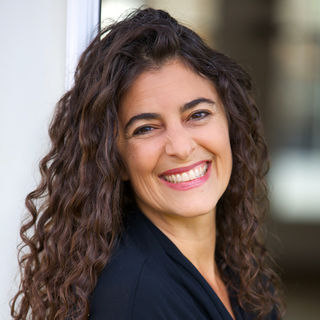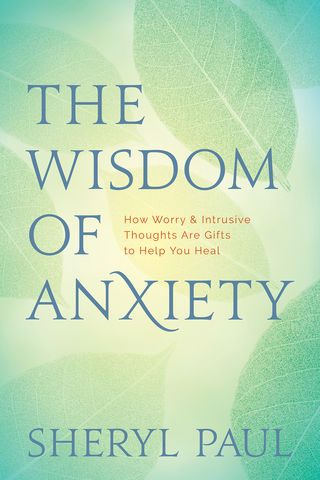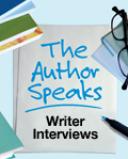
Anxiety is the disorder of the times. The United States National Institute of Health estimates that approximately 20 percent of Americans per year experience an anxiety disorder. It is typically accompanied by feelings of impending danger. It creates unpleasant physical sensations, from digestive problems to trembling. It keeps people up at night. But that is not the only way to look at anxiety.
I suspect that there are millions of people around the globe who have no idea that anxiety holds any wisdom at all. Why would that be?
We live in a culture that seeks to eradicate, deny, or bypass pain and discomfort in all forms, from the physical to the emotional, and fails to recognize that all of our pain carries wisdom. The culture says: If you’re tired, drink more coffee; if you have a headache, take a pill; if you’re anxious, get rid of it. Furthermore, we carry a shame-based mindset about anxiety that leads people to believe that having anxiety is evidence of brokenness or disorder. This is the opposite of viewing anxiety as a carrier of wisdom. When we view our symptoms through a lens of shame, we bypass curiosity, which is the lamplight by which we glean wisdom.
In brief, what is the wisdom of anxiety?
The wisdom of anxiety is that when you move toward it and listen, instead of denying it or anesthetizing it, it will lead you into the labyrinth of the psyche where the unshed pain, unhealed wounds, and the grief of unlived lives that you’ve stuffed into the shadow bag are waiting for your attention. The wisdom of anxiety is that when we listen to the distress flares we’re guided in the direction of healing and growth.
Our symptoms are so wise. Our bodies are so wise. Just as our physical pain response tells us to pay attention, so anxiety invites us to wake up. Anxiety is the pain response of psyche, the call to turn inward and pay attention. It’s a distress flare, and if we don’t listen to the signal, it will get louder and louder. We live in these extraordinary bodies and psyches that will guide us toward well-being if only we could slow down long enough and find the courage to listen.
The wisdom to glean from anxiety will be different for everyone; it’s not a formulaic approach, as we are each unique human beings. In other words, what needs attention will differ for everyone, but there will always be wisdom and guidance that emerge when anxiety is approached through the lens of curiosity and compassion.
How did you come to recognize there is wisdom in anxiety?
I was raised by two psychotherapists and have always been fascinated by my inner world. I’ve kept a journal since I was six years old and have faithfully written my dreams down every morning. So when I had my first panic attack at age 21 and was dragged into the underworld of anxiety for the next several years, I was already steeped in the mindset of curiosity. Shortly after that first panic attack, I entered a Master’s program in counseling psychology at Pacifica Graduate Institute, where I was steeped in the Jungian mindset—particularly people like Robert Johnson and Marion Woodman—which understands that all of our symptoms are wise manifestations from the unconscious inviting us to grow and heal.
What keeps people from understanding the wisdom of anxiety?
We are physiologically and psychologically wired and conditioned to push away what’s uncomfortable, so a lot of practice, rewiring, and courage is required to reverse our habitual response and move toward anxiety instead of away from it. We’re not taught to approach our bodies and psyches through the lens of respect and curiosity. We live in a neck-up culture, which means we value intellectual pursuit and achievement and devalue the wisdom that lives in and is expressed through the body. If there was a subject in school called “self-awareness” and children were encouraged to spend time each day getting to know themselves, their inner world, their thoughts and feelings, their dreams, and what helps them stay regulated versus what dysregulates, we wouldn’t have a hard time understanding the wisdom of anxiety
Why do you consider anxiety “the wound of our times”? What does that mean?
With 260 million people diagnosed with anxiety worldwide—and many more undiagnosed— it’s clear that we’re suffering through an age of anxiety. There are many other wounds—depression, insomnia—yet in some way even these wounds are connected to anxiety. If you don’t struggle with anxiety yourself, you know someone who does. When we’re in the realm of massive, widespread pain, we know we’re in the realm of a collective wound that is pointing us in the direction of a new stage of our psychological evolution.
Can you explain the role you believe that responsibility plays in overcoming anxiety?
Responsibility is essential on so many levels. Many people have an escape hatch or rescue fantasy that tries to convince them that if they change their outer circumstances or find the “right” partner they’ll be lifted out of their pain and anxiety. There is no escape hatch for life, meaning that part of being human is feeling pain, discomfort, vulnerability, grief, boredom, frustration. Because very few people were taught how to meet these big and uncomfortable feelings early in life, they grow up with coping mechanisms—like intrusive thoughts—that are designed to lift them out of the messiness and give them a foothold, something they can attach onto in their minds. It’s a brilliant defense mechanism in early life, but it’s not one that serves in the long run. So when you take responsibility you see that you and you alone are responsible for your well-being, which ultimately means learning how to tend to your pain effectively.
How is anxiety related to transitions?
When we can’t name and contextualize our experience, the nameless dread morphs into anxiety. Our lives are comprised of small and big transitions—from waking up in the morning and transitioning out of dream world to graduating from college, getting married, getting divorced, and more. Our culture doesn’t contain these transitions with rituals. It doesn’t help us understand that every transition activates grief as we’re letting go of the present moment or identity and stepping into a new stage. When we can name and feel the sadness, it moves along the river of our emotional experience. But if we don’t know that it’s normal, we fall into the shame-based mindset of trying to figure out what’s wrong, and from there it’s a few short steps to anxiety.
My early work and my first book, The Conscious Bride, was focused on the underbelly of the wedding transition and the shame and anxiety that arise for women when they feel anything less than pure joy during what the culture has conditioned them to believe is supposed to be the happiest time of their life. Instead of allowing the normal and necessary grief and fear to be there, in the absence of accurate information and healthy rituals it quickly morphs into anxiety. This same mindset applies to all transitions.
Is there a difference between relieving anxiety and healing anxiety?
We can relieve anxiety in the moment by engaging in on-the-spot practices, like deep belly breathing or the Buddhist practice of Tonglen, but healing chronic anxiety requires addressing it from the root and committing to daily, deep-dive practices in all four realms of self: physical, emotional, cognitive, and spiritual. Both on-the-spot and deep dive practices are featured in the book.
Is there one path to treating anxiety or multiple ways?
There are a plethora of powerful and effective modalities available today for working with anxiety, and they’re all significantly more effective when they’re grounded in a mindset of self-compassion and respect for the anxiety itself. The paradox is that when we shift from trying to get rid of anxiety to moving toward and allowing it to guide us into our inner worlds, anxiety loses its grip and diminishes. As we say in psychology, what we resist persists, and of course, this applies to all of our symptoms, including anxiety.
What do you regard as the most effective measures for controlling anxiety?
I’m less interested in controlling anxiety and more interested in recognizing that when we learn to show up for ourselves in loving ways, anxiety diminishes. In other words, when we take care of our bodies, learn to respond to our thoughts effectively, meet our emotions with compassion, and fill the well of soul and/or connect to a consistent spiritual practice, anxiety lessens. Since anxiety is a messenger that alerts us to when we’re off-kilter in some way, it will always show up from time to time, just as we get dehydration headaches when we haven’t had enough water. We can heal a certain amount of anxiety from the root, then we need to listen to it when it arises and skillfully glean its messages (which aren’t always what appears at face value).

What would you consider the single most important message you would like people to remember about anxiety?
I’m presenting a shift in mindset. We can view pain of all kinds—physical, emotional, spiritual—as a messenger offering an opportunity to grow and heal, or we can see anxiety through the lens that we’re being tortured or punished or that it’s evidence of brokenness. One is a lens of hope and even gratitude, and one is a lens of shame. One is the lens of the warrior that sees pain as an opportunity. When we can move toward anxiety instead of pushing it away, everything changes.
About THE AUTHOR SPEAKS: Selected authors, in their own words, reveal the story behind the story. Authors are featured thanks to promotional placement by their publishing houses.
To purchase this book, visit:




